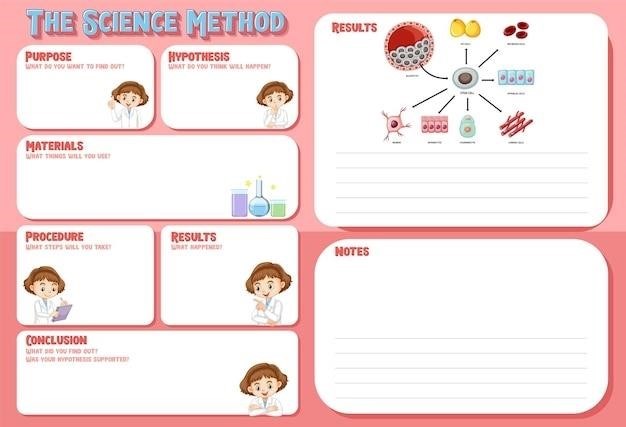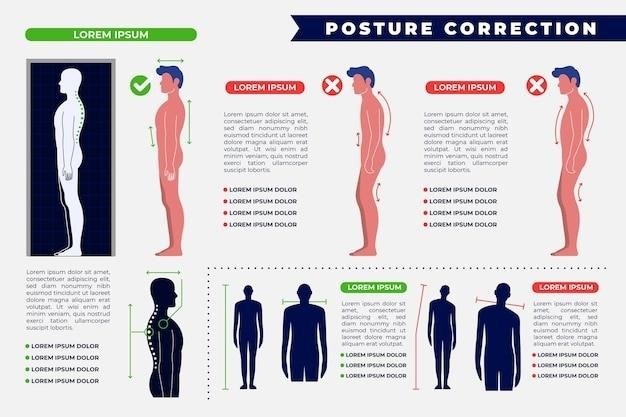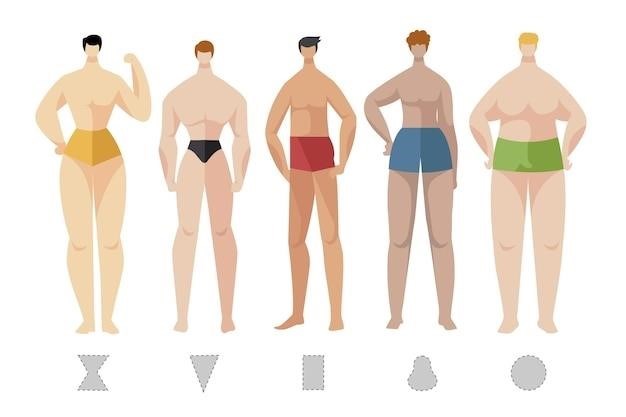The F01 Fire Guard Certificate of Fitness license is required by individuals‚ employed by building owners‚ who are responsible for watches in buildings with temporary malfunctioning fire detection and fire suppression systems. This study guide will help you prepare for the F01 Fire Guard for Impairment (Citywide) exam‚ which is administered by the FDNY.
What is a Fire Guard?
A Fire Guard is an individual who holds a Certificate of Fitness (CoF) issued by the FDNY‚ specifically the F-01 certification. This certification designates them as qualified to perform fire watch duties in buildings where required fire protection systems are out of service. Fire Guards play a crucial role in ensuring the safety of occupants during such impairments. They are responsible for maintaining a constant vigil‚ monitoring for any signs of fire‚ and taking immediate action to prevent or mitigate fire hazards.
The presence of a Fire Guard is mandatory in buildings where the fire protection system is temporarily disabled‚ whether due to planned maintenance‚ repairs‚ or unforeseen malfunctions. They serve as the primary line of defense against potential fires during these periods‚ ensuring the building is adequately protected until the fire protection system is restored to full functionality.
The F-01 certification is essential for anyone who wishes to work as a Fire Guard in New York City. It demonstrates that the individual has the necessary knowledge and skills to perform fire watch duties effectively and safely. The certification process involves passing an exam that assesses the applicant’s understanding of fire safety regulations‚ fire protection systems‚ and emergency procedures.
Fire Guard Responsibilities
Fire Guards have a wide range of responsibilities‚ encompassing various aspects of fire safety and emergency preparedness. Their primary duty is to maintain a vigilant watch over the assigned area‚ ensuring that no fire hazards develop and that the building is safe for occupants. This involves regular patrols‚ inspections‚ and monitoring for any signs of smoke‚ fire‚ or other potential dangers.

Fire Guards must be familiar with the building’s fire protection systems‚ including fire alarms‚ sprinkler systems‚ and fire extinguishers. They are responsible for ensuring that these systems are in proper working order and for reporting any malfunctions or defects to the building owner or designated personnel. They must also be knowledgeable about the building’s evacuation procedures and be prepared to guide occupants to safety in the event of a fire emergency.
Beyond their routine fire watch duties‚ Fire Guards may also be responsible for tasks such as⁚
- Inspecting exits‚ stairwells‚ and hallways for obstructions or hazards
- Monitoring the use of open flames‚ hot work‚ and other potential fire hazards
- Educating occupants about fire safety procedures and emergency plans
- Assisting with fire drills and other emergency preparedness exercises
The specific responsibilities of a Fire Guard may vary depending on the size and type of building‚ as well as the nature of the impairment. However‚ the core principles of fire safety‚ vigilance‚ and emergency preparedness remain constant.
Fire Guard Training Requirements
To become a certified Fire Guard in New York City‚ individuals must undergo specific training and pass a comprehensive exam administered by the FDNY. This training ensures that Fire Guards have the necessary knowledge‚ skills‚ and understanding to perform their duties effectively and contribute to fire safety within the city.
The training curriculum typically covers a wide range of topics‚ including⁚
- Fire safety regulations and codes applicable to New York City
- Fire protection systems‚ including fire alarms‚ sprinkler systems‚ and fire extinguishers
- Fire hazards and prevention measures
- Emergency response procedures and evacuation plans
- Fire watch procedures and responsibilities
- Use and maintenance of fire extinguishing equipment
- Communication and reporting procedures during a fire emergency
Training may be delivered through various methods‚ including classroom instruction‚ online courses‚ and hands-on practical exercises. The training duration may vary depending on the provider and the specific requirements of the course. However‚ the goal is to equip individuals with the knowledge and skills needed to pass the FDNY exam and become a certified Fire Guard.
F01 Fire Guard Exam Preparation
Preparing for the F01 Fire Guard exam requires a focused approach and dedication to understanding the material. The exam assesses your knowledge of fire safety regulations‚ fire protection systems‚ and the responsibilities of a Fire Guard. To maximize your chances of success‚ consider the following strategies⁚
- Review the FDNY Study Material⁚ The FDNY provides comprehensive study material that covers all the essential topics for the F01 exam. This material is available online and can be a valuable resource for your preparation.
- Practice Tests⁚ Utilize practice tests to familiarize yourself with the exam format and question types. These tests can help you identify areas where you need further study and build your confidence.
- Study Groups⁚ Join or form a study group with other individuals preparing for the exam. Discussing concepts and practice questions together can enhance your understanding and retention.
- Seek Professional Guidance⁚ If you’re struggling with certain topics or need additional support‚ consider enrolling in a Fire Guard training course or seeking guidance from a qualified instructor.
- Stay Organized⁚ Create a study schedule and stick to it. Divide the material into manageable sections and allocate sufficient time for each topic. Regular review and practice will help you retain information.
Remember‚ preparation is key to success. By dedicating time and effort to understanding the material‚ you can increase your chances of passing the F01 exam and becoming a certified Fire Guard.
Important Topics Covered in the F01 Exam
The F01 Fire Guard exam covers a range of crucial topics related to fire safety and the responsibilities of a Fire Guard. These topics are designed to ensure that individuals holding the F01 certification possess the knowledge and skills necessary to effectively perform fire watch duties in buildings with impaired fire protection systems.
- Fire Protection Systems⁚ Understanding the various fire protection systems in place in buildings‚ including sprinkler systems‚ fire alarms‚ and standpipes‚ is crucial. You should be familiar with their operation‚ maintenance‚ and potential impairments.
- Fire Guard Responsibilities⁚ The exam will test your knowledge of the specific duties of a Fire Guard‚ such as conducting patrols‚ inspecting fire protection systems‚ and responding to fire emergencies. It’s essential to be familiar with the requirements for maintaining a fire watch.
- Fire Extinguishers⁚ Knowledge of different types of fire extinguishers‚ their uses‚ and how to operate them is essential. You should be able to identify the appropriate extinguisher for various types of fires.
- Emergency Procedures⁚ The exam will assess your understanding of evacuation procedures‚ fire alarm activation‚ and communication protocols during a fire emergency. It’s important to know how to contact the FDNY and guide building occupants to safety.
- Fire Codes and Regulations⁚ Familiarity with relevant fire codes and regulations‚ particularly those pertaining to fire watches and impaired fire protection systems‚ is essential. This includes knowing the requirements for building owners and Fire Guards.
By thoroughly studying these key topics‚ you’ll be well-prepared to handle the challenges of the F01 Fire Guard exam and gain the knowledge necessary to ensure fire safety in buildings.
Fire Protection Systems and Impairments
Understanding fire protection systems and their potential impairments is a critical component of the F01 Fire Guard exam. Fire protection systems are designed to detect and suppress fires‚ safeguarding building occupants and property. However‚ these systems can experience malfunctions or require maintenance‚ leading to impairments that necessitate fire watch protocols.
- Sprinkler Systems⁚ Sprinkler systems are vital for automatic fire suppression. Impairments can occur due to frozen pipes‚ valve malfunctions‚ or damage to sprinkler heads. Fire Guards must be aware of the potential for these issues and the appropriate procedures for addressing them.
- Fire Alarms⁚ Fire alarms are crucial for early detection and notification. Impairments can arise from faulty sensors‚ power outages‚ or malfunctioning control panels. Fire Guards should understand how to identify alarm system problems and initiate appropriate actions.
- Standpipe Systems⁚ Standpipe systems provide a source of water for firefighters. Impairments can result from blocked hoses‚ damaged valves‚ or insufficient water pressure. Fire Guards should be familiar with the location and operation of standpipes and how to report any issues.
- Other Systems⁚ Buildings may have additional fire protection systems‚ such as smoke detectors‚ fire extinguishers‚ and fire doors. Fire Guards must be knowledgeable about these systems‚ their functions‚ and potential impairments.
The F01 exam emphasizes the importance of recognizing and addressing fire protection system impairments. By understanding the potential for malfunctions and how to respond appropriately‚ Fire Guards can ensure building safety during periods of system downtime.
Practice Tests and Study Resources
Preparing for the F01 Fire Guard exam requires diligent study and familiarity with the exam content. Practice tests and study resources can significantly enhance your readiness and confidence. Online platforms and study guides offer a wealth of material to guide your preparation.
- Online Practice Tests⁚ Numerous online platforms offer practice tests specifically designed for the F01 exam. These tests often simulate the exam format and cover key topics‚ providing valuable feedback on your understanding and identifying areas for improvement.
- Study Guides⁚ Several study guides are available‚ either in print or online‚ that cover the F01 exam content comprehensively. These guides often include detailed explanations of fire protection systems‚ fire guard responsibilities‚ and relevant regulations.
- FDNY Study Material⁚ The official FDNY study material for the F01 exam is a valuable resource. It provides a thorough overview of the exam content and includes practice questions and answers. You can access this material directly from the FDNY website or through links provided in some practice test apps.
- Flashcards⁚ Creating or using flashcards can be an effective way to memorize key terms‚ definitions‚ and procedures. This method can help you retain information and quickly recall it during the exam.
By utilizing practice tests‚ study guides‚ and other resources‚ you can gain a strong understanding of the F01 exam content and significantly increase your chances of success.
Fire Guard Duties During an Impairment
The role of a Fire Guard during an impairment is crucial in maintaining safety and ensuring a swift and organized response to any potential fire hazards. Understanding their responsibilities and the procedures to follow is essential for effective fire watch duty.
- Inspection and Patrol⁚ Fire Guards are responsible for conducting regular inspections and patrols of the assigned area. This includes checking for any potential fire hazards‚ such as open flames‚ unattended cooking‚ or malfunctioning equipment. They must also ensure that all fire doors are closed and that exits are clear and accessible.
- Emergency Response⁚ In the event of a fire‚ Fire Guards must immediately activate the fire alarm system and notify the fire department. They should then evacuate the building‚ following established evacuation procedures and ensuring the safety of all occupants.
- Communication⁚ Fire Guards must maintain clear communication with the building management‚ the fire department‚ and other relevant personnel. They should provide accurate and timely information about the situation‚ the location of the fire‚ and the number of occupants.
- Fire Extinguisher Operation⁚ While primarily focused on evacuation and alarm activation‚ Fire Guards should be familiar with the operation of fire extinguishers and be prepared to use them to extinguish small fires if necessary.
By diligently performing their duties‚ Fire Guards play a vital role in preventing and mitigating fire hazards‚ ensuring the safety of all occupants during impairment situations.
Passing the F01 Exam and Obtaining Certification
Passing the F01 Fire Guard for Impairment exam is the key to obtaining your Certificate of Fitness‚ which authorizes you to perform fire watch duties in New York City. The exam is computer-based and covers a range of topics related to fire safety‚ fire protection systems‚ and the role of a Fire Guard. Here’s a breakdown of the process⁚
- Study Materials⁚ The FDNY provides study materials online‚ and numerous practice tests and online courses are available. These resources cover the essential knowledge required for the exam. Familiarize yourself with the content and practice answering questions to enhance your comprehension and confidence.
- Exam Preparation⁚ Allocate sufficient time to thoroughly review the study materials‚ taking advantage of practice tests and online courses. Engage in active learning techniques‚ such as note-taking‚ flashcards‚ and self-testing to reinforce key concepts.
- Exam Day⁚ Arrive at the designated testing center on time with a valid photo ID. The exam consists of multiple-choice questions‚ and a passing score of 70% or higher is required to obtain certification.
- Certificate of Fitness⁚ Upon successfully passing the exam‚ you will receive your F01 Fire Guard for Impairment Certificate of Fitness. This certificate is valid for a specific period and must be renewed regularly. Keep your certificate safe and readily accessible for verification purposes.
Passing the F01 exam is a significant accomplishment‚ demonstrating your commitment to fire safety and your readiness to assume the responsibilities of a Fire Guard. By staying informed and prepared‚ you can confidently navigate the certification process and contribute to the safety of buildings and occupants in New York City.




























